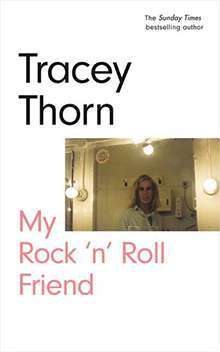 I first heard the Go-Betweens when a live version of their stand alone single Hammer the Hammer was included on the first JJJ Live at the Wireless album in 1983, which still ranks among my favourites, with outstanding performances by Private Lives, Hoodoo Gurus, Do-Re-Mi, The Triffids and The Particles, among others. The Go-Betweens track certainly caught my attention, swinging wildly between folk, pop and punk as I was at the time. Hammer the Hammer seemed to be a bit of all three. The punk side of it came mostly from the propulsive drumming.
I first heard the Go-Betweens when a live version of their stand alone single Hammer the Hammer was included on the first JJJ Live at the Wireless album in 1983, which still ranks among my favourites, with outstanding performances by Private Lives, Hoodoo Gurus, Do-Re-Mi, The Triffids and The Particles, among others. The Go-Betweens track certainly caught my attention, swinging wildly between folk, pop and punk as I was at the time. Hammer the Hammer seemed to be a bit of all three. The punk side of it came mostly from the propulsive drumming.
Thirty-eight years later, I’ve just finished reading My Rock ‘n’ Roll Friend, a fascinating account by Everything But The Girl’s Tracey Thorn of her friendship with that drummer, Lindy Morrison. It’s probably fair to say that it took someone like Thorn to tell Morrison’s story in this way, being close in contact and spirit with Morrison but not overly influenced by the now almost legendary status The Go-Betweens hold in Australian music.
What Thorn relates is the story of an Australian woman in rock music who was misunderstood and mistreated by her own band members, specifically two artistically inclined but socially maladroit boys-who-never-became men, stunted by their personal mutual admiration society. Thorn isn’t that harsh, and neither is Morrison, but jeez what a pair of wankers.
The climactic sacking of the two women members of The Go-Betweens, Morrison and multi-instrumentalist (and now acclaimed film composer) Amanda Brown by their male band mates – and former partner and current partner at the time, respectively – is jaw dropping in the paucity of its thinking and the cruelty of its execution.
But this book is not the story of The Go-Betweens, it’s the story of a misfit musician, a woman who came out of Brisbane’s Bjelke-Petersen era punk scene, who joined an arthouse duo, who played drums in a dress with a handbag by her side and rocked, who was never accepted by her band members even after one of them fell in love with her.
Thorn’s position as a friend and admirer, who largely kept contact with Morrison by letters, gives her a unique perspective on what kept Morrison going, even as Robert Forster and Grant McLennan pondered whether she was the reason the band never cracked the big time. Putting her account of Morrison’s history in the first person present tense is a stroke of genius – no wonder she’s become a bestselling author.
The whole thing builds up to when Thorn visited Morrison in Brisbane just a few years ago and they start going through their correspondence, which provides the background for all the events in the book leading up to that point. It’s not nearly as complicated as I’ve made it sound, but it’s a very clever structure.
I have to mention that I met Lindy Morrison a couple of times in the early 90s when she had just started working with the Junction House Band, a Sydney-based group of musicians with intellectual disabilities. I was on the board of Junction House for a while, and the main impression I had was that she was completely comfortable with the band members, who neither knew nor cared that she had been a Go-Between.
I have also been an ardent admirer of Robert Forster’s music criticism for The Monthly from 2005-2013 but, honestly, after reading this book I can never regard him in the same way again. I will also never think of Lindy Morrison in the same way again, for the opposite reason. Great book.